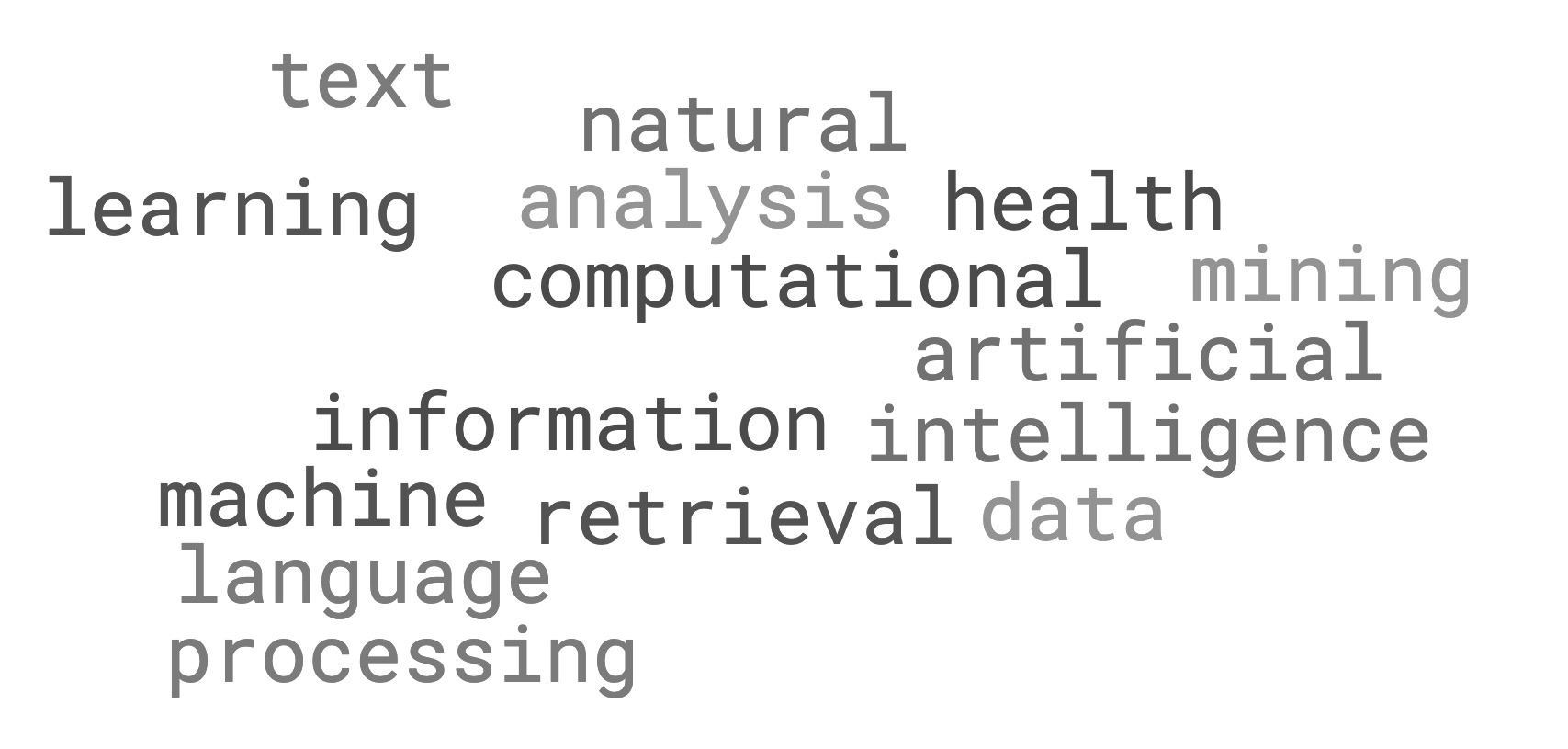

Education
Georgetown University
PhD Computer Science
2020 - Present
Washington D.C., U.S.A.

Savitribai Phule Pune University
BE Computer Engineering
2016 - 2020
PVGCOET, Pune MH, India

Publications
Genetic Generative Information Retrieval
DocEng 2023
Hrishikesh Kulkarni, Zachary Young, Nazli Goharian, Ophir Frieder, Sean MacAvaney
Lexically-Accelerated Dense Retrieval

SIGIR 2023
Hrishikesh Kulkarni, Sean MacAvaney, Nazli Goharian, Ophir Frieder
Knowledge Augmentation for Early Depression Detection
AAAI W3PHIAI 2023
Hrishikesh Kulkarni, Sean MacAvaney, Nazli Goharian, Ophir Frieder
TBD3: A Thresholding-Based Dynamic Depression Detection from Social Media for Low-Resource Users
LREC 2022
Hrishikesh Kulkarni, Sean MacAvaney, Nazli Goharian, Ophir Frieder
High-Quality Dialogue Diversification by Intermittent Short Extension Ensembles
ACL Findings 2022
Zhiwen Tang, Hrishikesh Kulkarni, Grace Hui Yang
Sentiment Progression Based Searching and Indexing of Literary Textual Artefacts
Springer NLDB 2021
Hrishikesh Kulkarni, Bradly Alicea
Pivot Point Based Intelligent System to Associate Creative Textual Artefacts
Springer IEA/AIE 2021
Hrishikesh Kulkarni, Bradly Alicea
Cultural, Emotional, and Associative Traits to Determine Literary Inclination
PsyArXiv 2020
Hrishikesh Kulkarni, Bradly Alicea
Context Vector Convergence (CVC) of Computational Behavior and Cultural Traits for Team Selection
Inderscience Journal IJIDS 2020
Hrishikesh Kulkarni, Manisha Marathe
Computational Psychology to Embed Emotions into Advertisements to Develop Emotional Bonding
Indian Journal of Psychological Science 2019
Hrishikesh Kulkarni, Prachi Joshi, PK Chande
Personalized Newspaper Based on Emotional Traits Using Machine Learning
IEEE ICCUBEA 2019
Hrishikesh Kulkarni, Tejas Joshi, Nikhil Sanap, Rohan Kalyanpur, Manisha Marathe
Cultural Association Based on Machine Learning for Team Formation
IEEE ICCUBEA 2019
Hrishikesh Kulkarni, Bradly Alicea
Machine Learning Based Cultural Suitability Index (CSI) for Right Task Allocation
IEEE ICECCT 2019
Hrishikesh Kulkarni, Manisha Marathe
Multi-Agent System for Customer Behavior Tracking Using Shoppers Path Traversal
IEEE ICECCT 2019
Hrishikesh Kulkarni, P Patil, R Menon
Computational Psychology to Embed Emotions into Product to Increase Customer Affinity
Springer ICICCT 2019
Hrishikesh Kulkarni, Prachi Joshi, Pradip Chande
Cultural Affinity through Associative Machine Learning and Behavioral Computation
NAPS IPC 2018
Hrishikesh Kulkarni, Bradly Alicea
Computational Psychology to Embed Emotions into News or Advertisements to Increase Reader Affinity
NAPS IPC 2018
Hrishikesh Kulkarni, Prachi Joshi, Pradip Chande
Multi-Graph based Intent Hierarchy Generation to Determine Action Sequence
Springer ICDECT 2017
Hrishikesh Kulkarni
Thought Process based Team Member Selection Using Contextual Sentiment Closeness
IEEE I2CT 2017
Hrishikesh Kulkarni
Intent Action Ontology and Tone Matching Algorithm for Organizing News Articles
IEEE ICECDS 2017
Hrishikesh Kulkarni
Intelligent Context Based Prediction using Probabilistic Intent-Action Ontology and Tone Matching Algorithm
IEEE ICACCI 2017
Hrishikesh Kulkarni
Contextual Data Representation Using Prime Number Route Mapping Method and Ontology
IEEE ICCUBEA 2017
Hrishikesh Kulkarni
Patents
WO2019026087 - An intelligent context based prediction system
WIPO (Indian Patent) 2017
Hrishikesh Kulkarni
Honors and Awards
ACM SIGIR 2023 Student Travel Grant
Merit-based Graduate School full tuition scholarship and research assistantship stipend award for 5 years - Georgetown University
Best Outgoing Student Award: Computer Engineering, PVGCOET, SPPU, Pune 2019-2020
Best Paper Award: Hrishikesh Kulkarni, Bradly Alicea, “Cultural Association Based on Machine Learning for Team Formation”, IEEE ICCUBEA 2019
Best Paper Award: Hrishikesh Kulkarni, “Contextual Data Representation Using Prime Number Route Mapping Method and Ontology”, IEEE ICCUBEA 2017
Founded Open Source Club at PVGCOET Pune 2018
Student representative for IQAC (Internal Quality Assurance Cell) PVGCOET 2018-2020 (out of 1200 students)
PVG Merit Award: First admission award - 2016 (out of 500 students)
Stood Sixth in High School Scholarship - 2011 (out of 30000 students)
Experience
Research
Georgetown University
Research Assistant (C.S. Dept)
National Insurance Academy
Research Intern (Mentor: Dr. S. Page)
iKnowlation Research Labs
Research Intern (Mentor: Dr. P. Chande)
Washington D.C., U.S.A.
Aug 2020 - Present
Pune MH, India
Jun 2019 - Aug 2019
Pune MH, India
Jul 2017 - Dec 2017
Teaching
Information Retreival (COSC-488)
Teaching Assistant (Professor: Dr. Nazli Goharian)
Intro to DBMS (COSC-280)
Teaching Assistant (Professor: Dr. Nazli Goharian)
Data Mining (COSC-285)
Teaching Assistant (Professor: Dr. Nazli Goharian)
Open Source Club
Founder and Mentor
Georgetown University
Aug 2022 - Dec 2022
Georgetown University
Aug 2022 - Dec 2022
Georgetown University
Aug 2021 - Dec 2021
Pune MH, India
Aug 2018 - May 2020
Other
Google Summer of Code - GNU Compiler Collection (GCC)
Summer Intern (Mentors: Martin Liska, Jan Hubicka)
Kaizen Infosys
Summer Intern (Mentor: Nenadd Chandorkar)
Remote
May 2018 - Aug 2018
Pune MH, India
May 2017 - Jul 2017